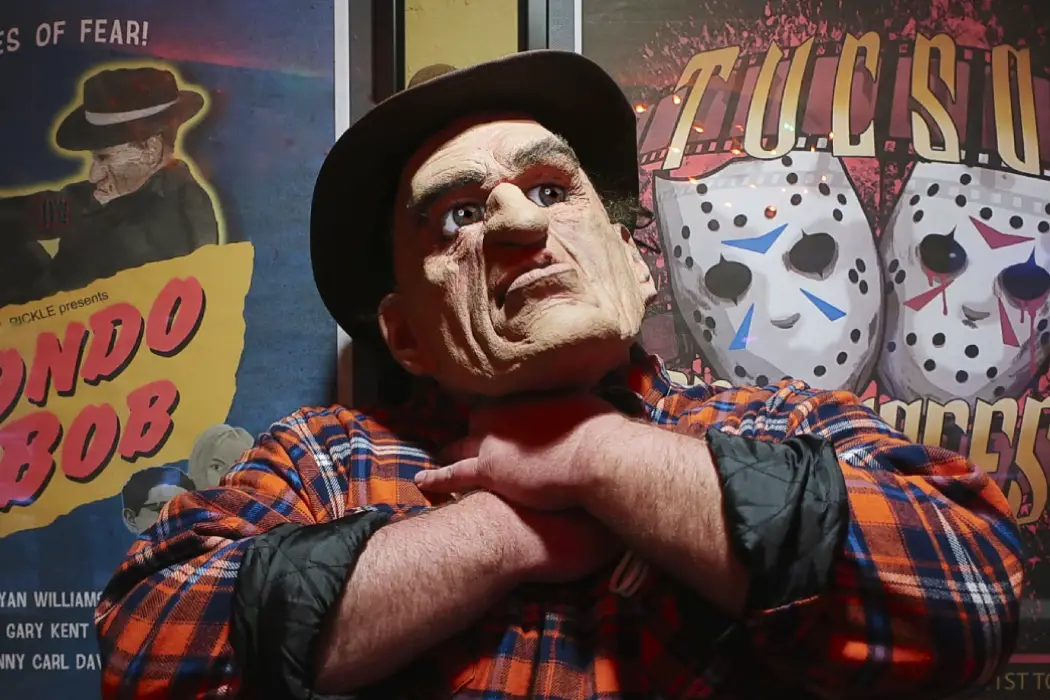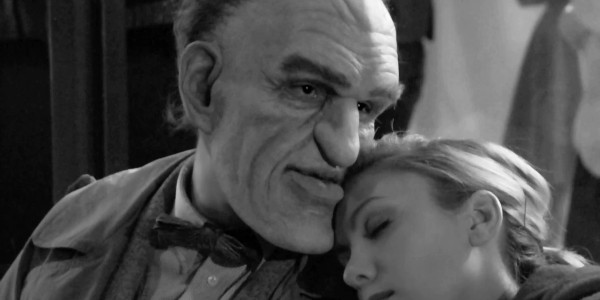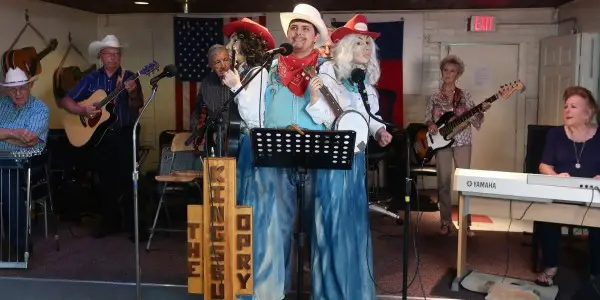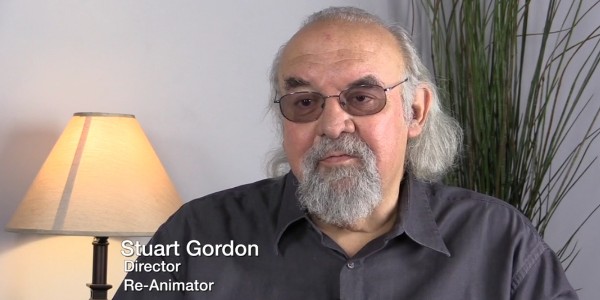RONDO AND BOB: Interesting Connections Lost Amid Re-Enactments

Amanda Mazzillo is a writer with an MFA in Dramatic…
Joe O’Connell‘s documentary Rondo and Bob highlights the unique lives and careers of art director Robert A. Burns and journalist & actor Rondo Hatton. The film highlights their lives separately, while sharing connections between the two, mainly through Burns obsession with Hatton.
Rondo and Bob explores the legacy of horror icons: Robert A. Burns – iconic art director of The Texas Chain Saw Massacre, Re-Animator, Tourist Trap, The Hills Have Eyes, and more horror classics – and Rondo Hatton – Tampa reporter who had a short career in Hollywood horror due to his acromegaly, which caused his bones to never stop growing.
Loose Connections
Rondo and Bob is a documentary that offers some insight into these two captivating men and their careers, but often the best moments get lost in the film’s use of reenactments and loose connections between each moment. At times, I wondered if the film was going to say anything else about Burns relationship with Rondo Hatton and his work.

For a documentary centered around two people and how their stories are in conversation with each other, the segments are often focused entirely on one person. And at times, the transition between sections of the film are jarring, creating more disconnect within the story of the documentary. One of the reenactments goes abruptly into a completely different anecdote with an extremely different tone and comes across as disjointed. Rondo and Bob has potential and there are some nice anecdotes about both Burns and Hatton, but these moments do not come about often enough for the documentary to remain engaging throughout.
Use of Re-Enactments
Rondo and Bob loses some of the charm that comes from its concept with the excessive use of reenactments. Some of the reenactments of Rondo Hatton work, but the repeated reenacted interview between Burns and Mae Hatton, Rondo’s widow, never work well. And as the film progresses, these are the only glimpses and references we have to Hatton. The discussions about Hatton are interesting, especially showing the differences between his horror characters and his real personality, but relying on reenactments makes these moments not work as well as they could.

During the end credits, we are shown footage of Burns that we saw throughout the film and it made you wonder why this footage was used in the credits and not throughout the film. Even if this footage has no audio, seeing more footage of Burns throughout the documentary as others discuss his career and vast talents would have made the documentary more vivid and engaging throughout. The reenactments almost never worked, but sometimes they were used alongside interesting anecdotes and stories, taking away some of the charm and impact from those moments.
Interviews
Rondo and Bob works best when we get glimpses into Burns‘career through anecdotes about his life, working with him, and touching on the impact his work had on the landscape of horror in the 1970s and 1980s. Some of the best moments show clips of films and offer commentary from directors, actors, etc praising Burns work as Art Director to truly bring the horror of these films to life. Seeing a film give so much praise and attention to art direction is a change of pace and made for some nice moments highlighting the importance of building a scene in order to capture the true horror of the moment and story.

The moments capturing Burns creativity and talent as an art director are some of the most memorable in the film, especially the scenes talking about his work on The Texas Chain Saw Massacre. One of the most memorable is an anecdote on Burns staying up all night making new props with the bones he found the previous day.
Rondo and Bob works best when people who knew these men talked about their careers and personalities, allowing us to see the connections and differences between the pair. With a documentary like this one, we most want to see glimpses into the lives of these captivating figures, and Rondo and Bob is most successful during interviews and anecdotes free from reenactments.
One of the best moments in the documentary shares photographs on-screen with voice-over, providing memorable anecdotes that feel personal and unique. You can tell Joe O’Connell loves Burns – with a similar intensity as Burns own love for Hatton – but this gets lost in the film, having brief glimpses into Burns and Hatton’s unique lives, hidden within distracting other moments.
Conclusion
Rondo and Bob has moments of heart sharing O’Connell‘s adoration for Robert A. Burns and Burns adoration of Rondo Hatton, but these moments are lost amid a sea of re-enactments that never quite land.
Are you a fan of Burns work on The Texas Chain Saw Massacre and are you interested in seeing a documentary about his life? Share your thoughts in the comments.
Watch Rondo and Bob
Does content like this matter to you?
Become a Member and support film journalism. Unlock access to all of Film Inquiry`s great articles. Join a community of like-minded readers who are passionate about cinema - get access to our private members Network, give back to independent filmmakers, and more.
Amanda Mazzillo is a writer with an MFA in Dramatic Writing from SCAD and a BA in Writing & Linguistics and Film Studies minor from Georgia Southern University. She enjoys writing comedy and exploring all forms of media. Her Twitter name is a bad pun: @mazzillofirefox













